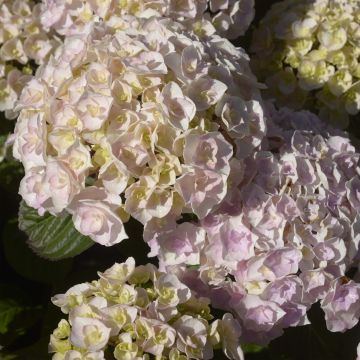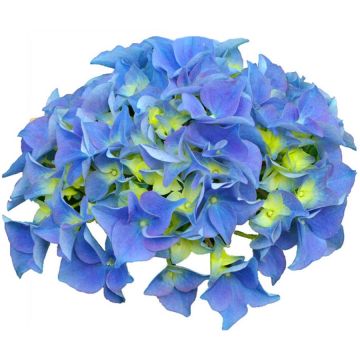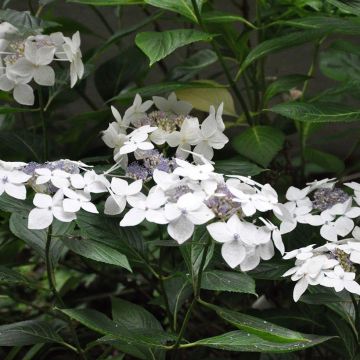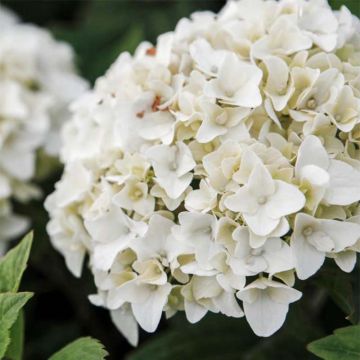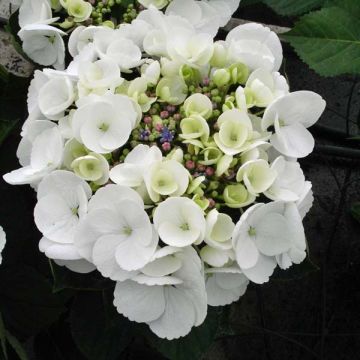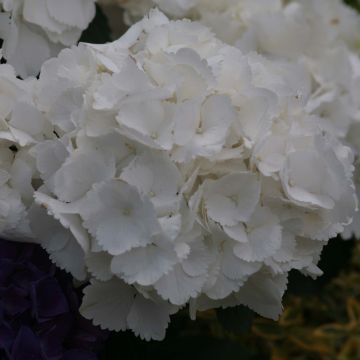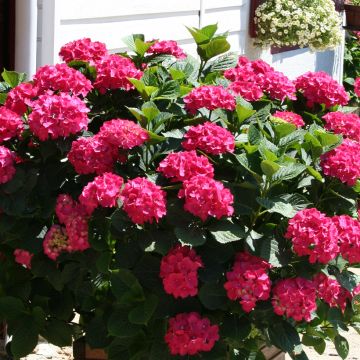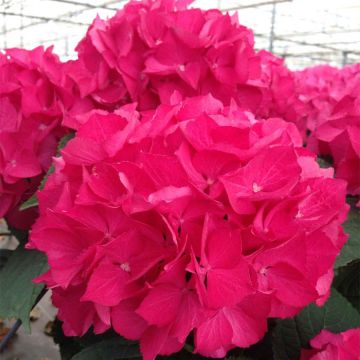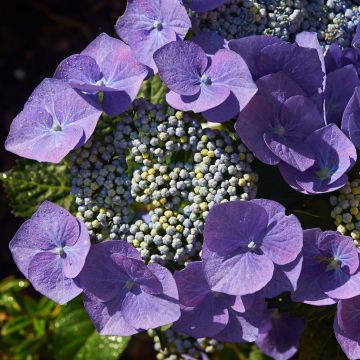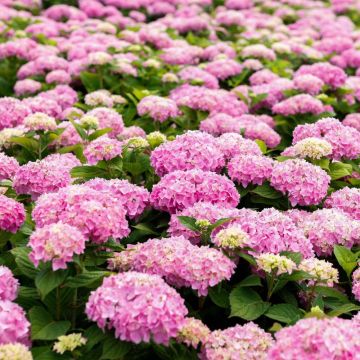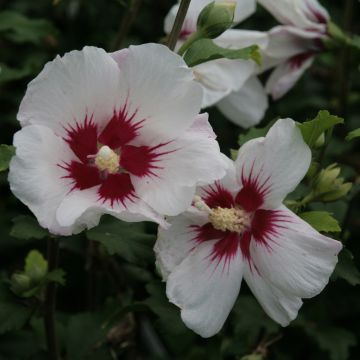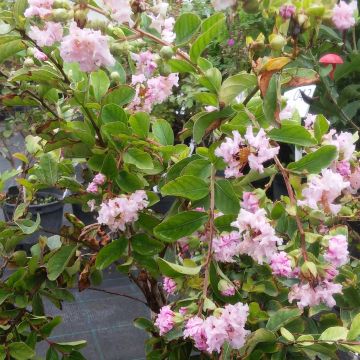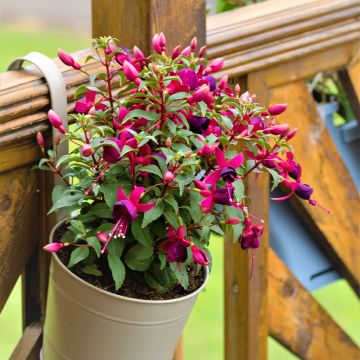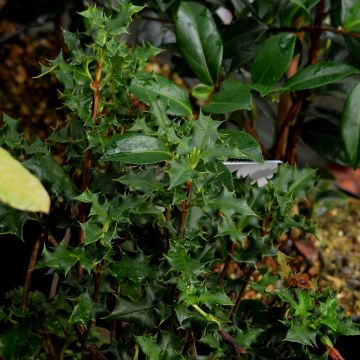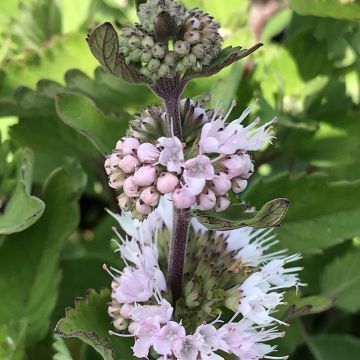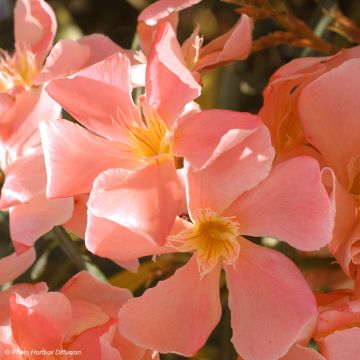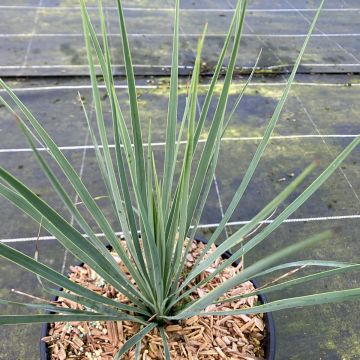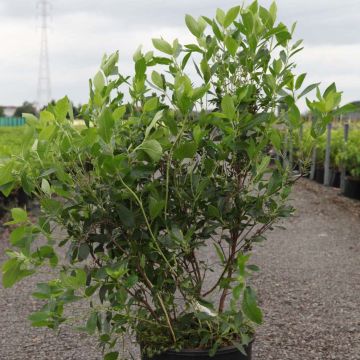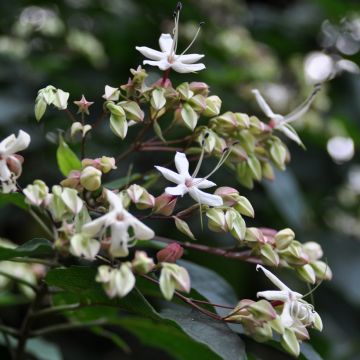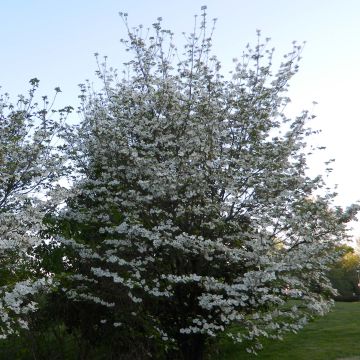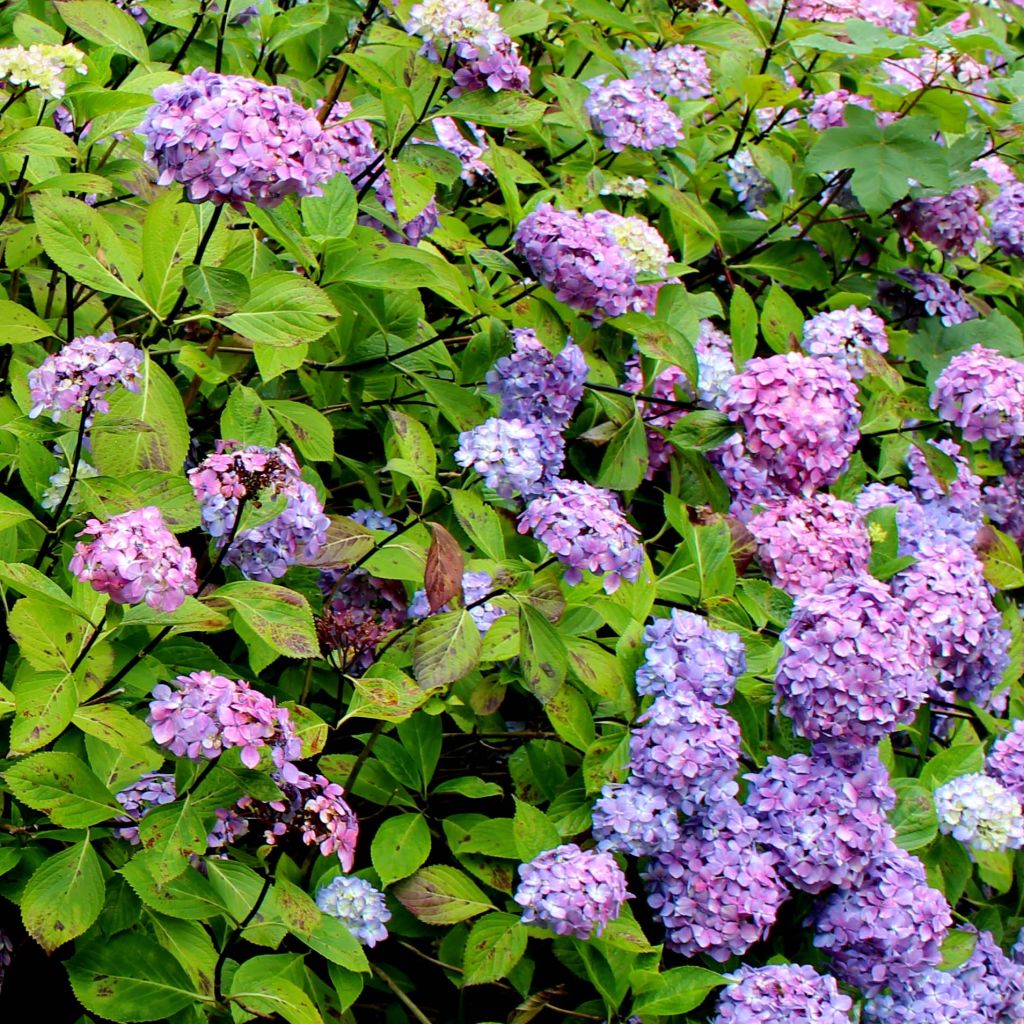

Hortensia - Hydrangea macrophylla Nigra
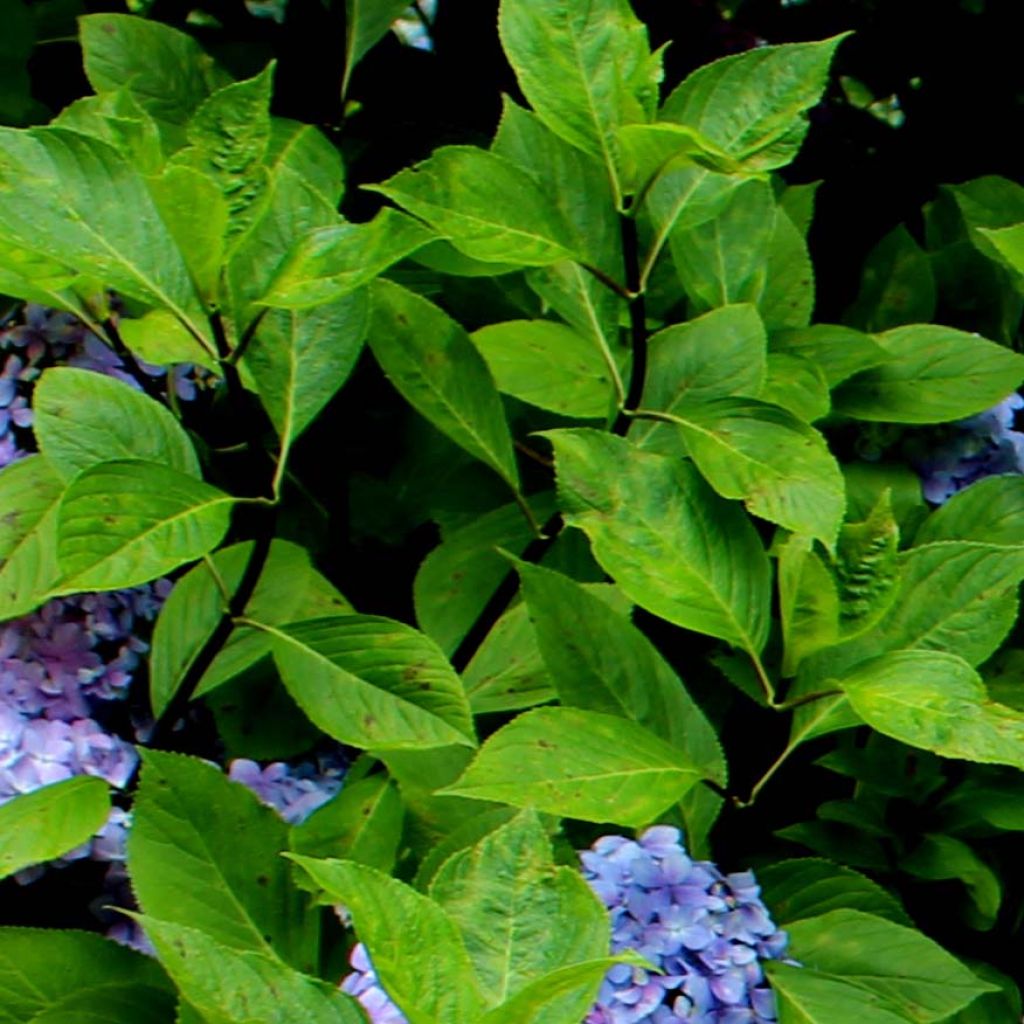

Hortensia - Hydrangea macrophylla Nigra
Hydrangea macrophylla Nigra
Hydrangea macrophylla Nigra
Bigleaf Hydrangea, French Hydrangea
This item cannot be shipped to the selected country
Delivery charge from €5.90
More information
Schedule delivery date,
and select date in basket
This plant carries a 24 months recovery warranty
More information
We guarantee the quality of our plants for a full growing cycle, and will replace at our expense any plant that fails to recover under normal climatic and planting conditions.
From €5.90 for pickup delivery and €6.90 for home delivery
Express home delivery from €8.90.


Does this plant fit my garden?
Set up your Plantfit profile →
Description
The Hydrangea or Hydrangea macrophylla 'Nigra', as its name suggests, stands out for its black wood. This enticing plant is a relatively compact and nicely rounded bush, with very dark stems and lush fir-green leaves, on which beautiful pale pink or soft blue flowers rest throughout the summer, depending on the nature of the soil. This hardy little bush will also draw attention in winter. It fits just as well in neat small gardens as on a terrace with a contemporary decor, to brighten up a shady area, in fresh and non-limestone soil.
The Hydrangea macrophylla 'Nigra' (synonym Hydrangea macrophylla 'Mandshurica') was introduced to the market in 1993, by the National Arboretum of the United States. It comes from the species H. macrophylla, native to Japan. Hydrangeas belong to the Hydrangeaceae family. 'Nigra' is part of a series of cultivars selected for their dark stems, covered with a young bark of almost black purple. This bush shows a bushy and rounded habit, regular, elegant. At the age of about 10 years it should grow to the size of 1 m (3 ft 4 in) 50 high and 1 m (3 ft 4 in) 20 wide. It produces large, dense spherical flower heads from July to September-October, at the end of long black stems aged 1 year or more. They are composed of a few rare fertile flowers and many larger sterile flowers, with striking dimorphism. In acidic soil, the flowers take a pale blue hue at maturity, in neutral soil they will be soft pink. The flowers change colour over time, fading to pretty shades of green, red, beige or brown. The flowering spreads over a lush shiny dark green, dentate, deciduous leafage. The leaves are opposite, they reach a minimum of ten centimetres in length. They are single, ovate to elliptical, ending in a pointed tip, roughly serrated. Hydrangeas can live at least 50 years.
The Hydrangea 'Nigra' is a structural plant, with an elegant and assertive personality, a bush to highlight parts of the garden or to dazzle in a large pot on the terrace. Hydrangeas are well known for brightening up the north side of houses. This variety will be happy with a non-burning east or west exposure, in semi-shade, planted in a border or as a standalone shrub. This variety is suitable for container cultivation, which will be positioned on the terrace in a large pot, or near the entrance. Eventhough these plants are not fond of limestone, they are not strictly speaking ericaceous plants. Combine hydrangeas with each other, with magellanica fuchsia, silver candelabras, Physocarpus, Japanese azaleas, annual impatiens, lilies, or plant spring-flowering bulbs in front of their round silhouette. Enjoy their sumptuous flowering in the garden or in the house.
Note: The colour of the flowers of macrophylla hydrangeas varies according to the PH of the soil. Traditionally blue varieties become pink in neutral or alkaline soil. To maintain a beautiful blue colour, mix ericaceous soil with your garden soil and add aluminium sulphate (slate contains it) or alum stone in spring.
Report an error about the product description
Hydrangea macrophylla Nigra in pictures
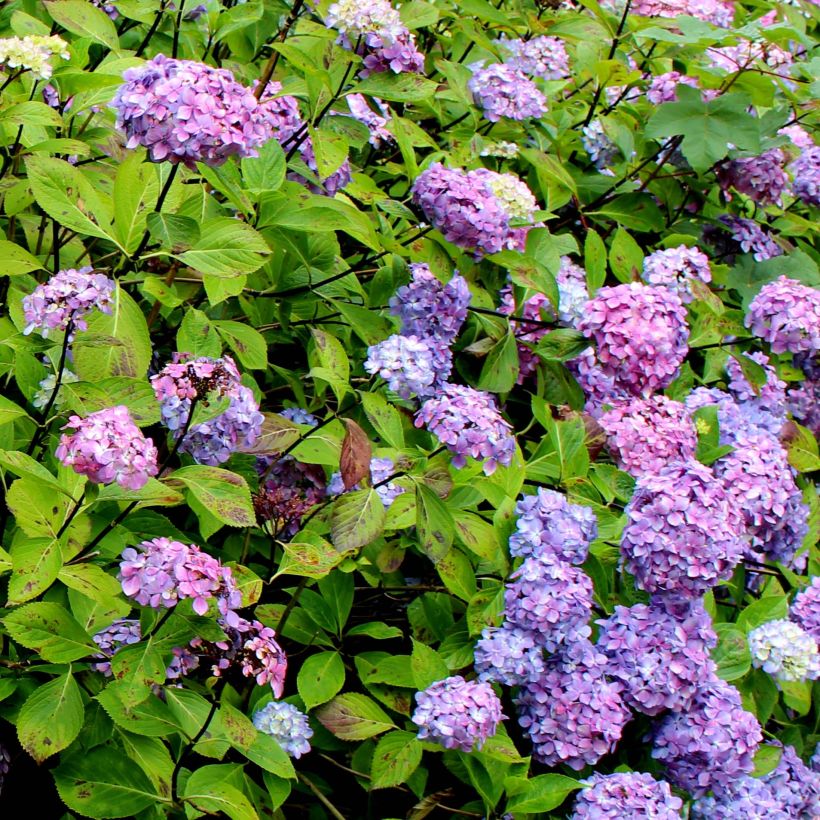

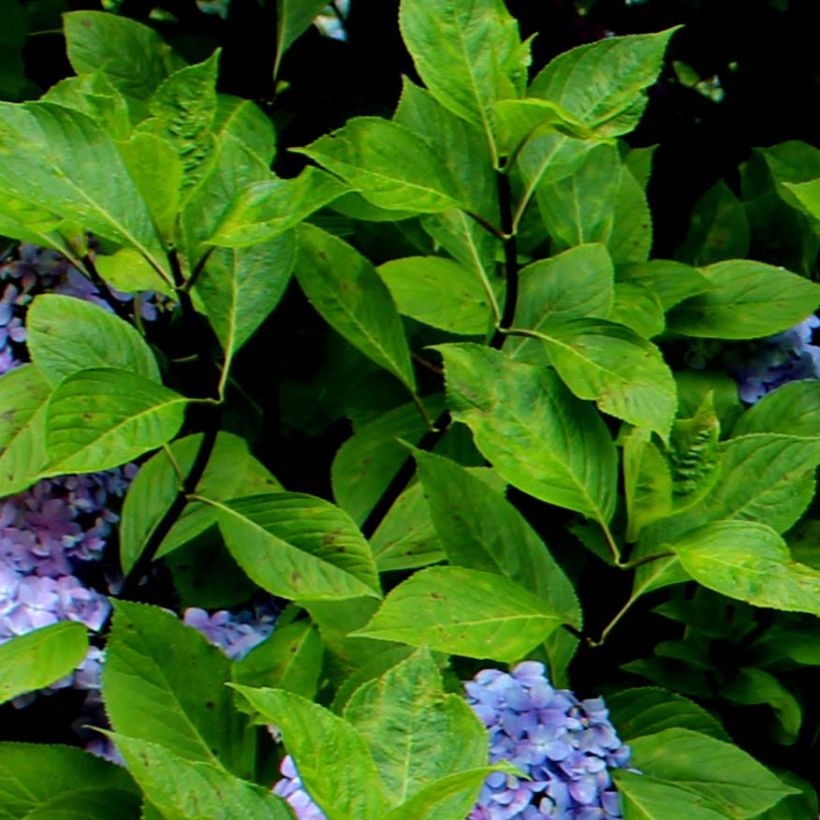

Plant habit
Flowering
Foliage
Botanical data
Hydrangea
macrophylla
Nigra
Hydrangeaceae
Bigleaf Hydrangea, French Hydrangea
Cultivar or hybrid
Other Hydrangea Macrophylla
Planting and care
Plant the hydrangea macrophylla 'Nigra' in spring or early autumn, preferably in a slightly shaded situation, for example against an east-facing wall, or even to the north. In very cold regions, it may be wise to winter it in a cold greenhouse or in the veranda, eventhough it can tolerate temperatures as low as -15°C (5 °F) without problem. Protect it from cold and drying winds. It does not require ericaceous soil, but appreciates a deep, fresh but well-drained, relatively fertile soil, enriched with a good base fertiliser before planting. If the soil is dry at the foot of the wall, plant the root ball at least 30-40 cm (11.8-15.7 in) from the base of the wall and incorporate plenty of well-rotted compost to better retain moisture in the soil. Regarding pruning, remove the faded flowers to the first bud or on the pair of buds directly below. Cut back to the base by a quarter or a third the oldest stems, when the plant is mature, to promote the formation of young shoots. Carry out this pruning every year during March and April.
Planting period
Intended location
Care
-
, onOrder confirmed
Reply from on Promesse de fleurs
Summer-flowering shrubs
Haven't found what you were looking for?
Hardiness is the lowest winter temperature a plant can endure without suffering serious damage or even dying. However, hardiness is affected by location (a sheltered area, such as a patio), protection (winter cover) and soil type (hardiness is improved by well-drained soil).

Photo Sharing Terms & Conditions
In order to encourage gardeners to interact and share their experiences, Promesse de fleurs offers various media enabling content to be uploaded onto its Site - in particular via the ‘Photo sharing’ module.
The User agrees to refrain from:
- Posting any content that is illegal, prejudicial, insulting, racist, inciteful to hatred, revisionist, contrary to public decency, that infringes on privacy or on the privacy rights of third parties, in particular the publicity rights of persons and goods, intellectual property rights, or the right to privacy.
- Submitting content on behalf of a third party;
- Impersonate the identity of a third party and/or publish any personal information about a third party;
In general, the User undertakes to refrain from any unethical behaviour.
All Content (in particular text, comments, files, images, photos, videos, creative works, etc.), which may be subject to property or intellectual property rights, image or other private rights, shall remain the property of the User, subject to the limited rights granted by the terms of the licence granted by Promesse de fleurs as stated below. Users are at liberty to publish or not to publish such Content on the Site, notably via the ‘Photo Sharing’ facility, and accept that this Content shall be made public and freely accessible, notably on the Internet.
Users further acknowledge, undertake to have ,and guarantee that they hold all necessary rights and permissions to publish such material on the Site, in particular with regard to the legislation in force pertaining to any privacy, property, intellectual property, image, or contractual rights, or rights of any other nature. By publishing such Content on the Site, Users acknowledge accepting full liability as publishers of the Content within the meaning of the law, and grant Promesse de fleurs, free of charge, an inclusive, worldwide licence for the said Content for the entire duration of its publication, including all reproduction, representation, up/downloading, displaying, performing, transmission, and storage rights.
Users also grant permission for their name to be linked to the Content and accept that this link may not always be made available.
By engaging in posting material, Users consent to their Content becoming automatically accessible on the Internet, in particular on other sites and/or blogs and/or web pages of the Promesse de fleurs site, including in particular social pages and the Promesse de fleurs catalogue.
Users may secure the removal of entrusted content free of charge by issuing a simple request via our contact form.
The flowering period indicated on our website applies to countries and regions located in USDA zone 8 (France, the United Kingdom, Ireland, the Netherlands, etc.)
It will vary according to where you live:
- In zones 9 to 10 (Italy, Spain, Greece, etc.), flowering will occur about 2 to 4 weeks earlier.
- In zones 6 to 7 (Germany, Poland, Slovenia, and lower mountainous regions), flowering will be delayed by 2 to 3 weeks.
- In zone 5 (Central Europe, Scandinavia), blooming will be delayed by 3 to 5 weeks.
In temperate climates, pruning of spring-flowering shrubs (forsythia, spireas, etc.) should be done just after flowering.
Pruning of summer-flowering shrubs (Indian Lilac, Perovskia, etc.) can be done in winter or spring.
In cold regions as well as with frost-sensitive plants, avoid pruning too early when severe frosts may still occur.
The planting period indicated on our website applies to countries and regions located in USDA zone 8 (France, United Kingdom, Ireland, Netherlands).
It will vary according to where you live:
- In Mediterranean zones (Marseille, Madrid, Milan, etc.), autumn and winter are the best planting periods.
- In continental zones (Strasbourg, Munich, Vienna, etc.), delay planting by 2 to 3 weeks in spring and bring it forward by 2 to 4 weeks in autumn.
- In mountainous regions (the Alps, Pyrenees, Carpathians, etc.), it is best to plant in late spring (May-June) or late summer (August-September).
The harvesting period indicated on our website applies to countries and regions in USDA zone 8 (France, England, Ireland, the Netherlands).
In colder areas (Scandinavia, Poland, Austria...) fruit and vegetable harvests are likely to be delayed by 3-4 weeks.
In warmer areas (Italy, Spain, Greece, etc.), harvesting will probably take place earlier, depending on weather conditions.
The sowing periods indicated on our website apply to countries and regions within USDA Zone 8 (France, UK, Ireland, Netherlands).
In colder areas (Scandinavia, Poland, Austria...), delay any outdoor sowing by 3-4 weeks, or sow under glass.
In warmer climes (Italy, Spain, Greece, etc.), bring outdoor sowing forward by a few weeks.

































